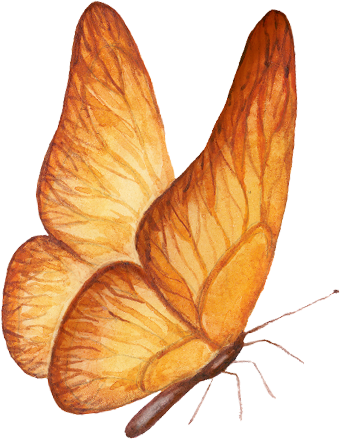
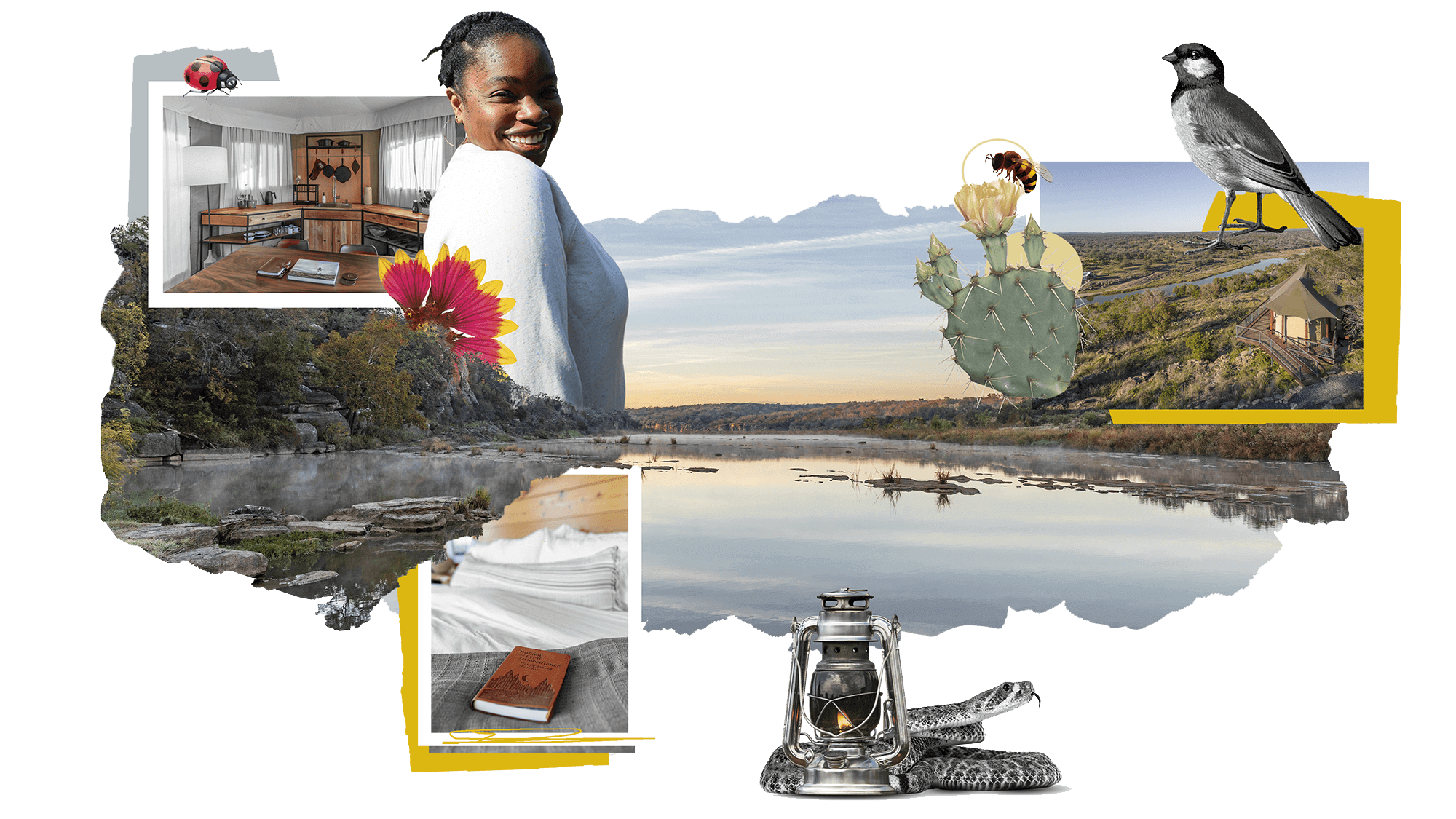
In Her
Element
For Texans with reservations about embracing their wild side, glamping offers a luxurious alternative to roughing it outdoors
In Poor Richard’s Almanack, Benjamin Franklin writes, “Half the truth is often a great lie.” One of my half-truths is that I’m not an outdoors person. When I think back to school field trips, I was far more excited about going to the Museum of Fine Arts, Houston than I was to the Oil Ranch—too much heat and hay for my taste. And when I was forced to help my mom plant flowers in our yard, I did so with ample teenage attitude. Truthfully, I wanted to dunk those Dusty Millers into their holes and toss some mulch on top so I could resume watching TGIF reruns, preferably with Fruit by the Foot in hand.
My half-truth concealed the fact that I was terrified of snakes—a response to a truth lurking just behind the great lie that everything at home was fine, which it most certainly was not. My dad’s passion for gardening had gradually morphed into hoarding throughout my teenage years, and discarded plastic containers and bags of leaves lined every corner of our yard, attracting all manner of scaly creatures.
Years prior, I recall waltzing through the reptile house at the Houston Zoo with complete indifference about the curled specimens lazing in aquariums. But daily encounters with snakes, particularly in my own house, turned them into avatars of everything I feared. Unpacking the layers of that truth, along with its accompanying shame, were too difficult to explain every time someone wanted to go hiking or camping.
My younger sister isn’t a fan of snakes either, but her insatiable appetite for adventure always overrides any serpentine reservations. For that reason, I’m surprised when she asks if I’d consider joining her on a Hill Country camping excursion. Before I can vehemently object, though, she interjects that this trip would fall more in the “glamping” category.
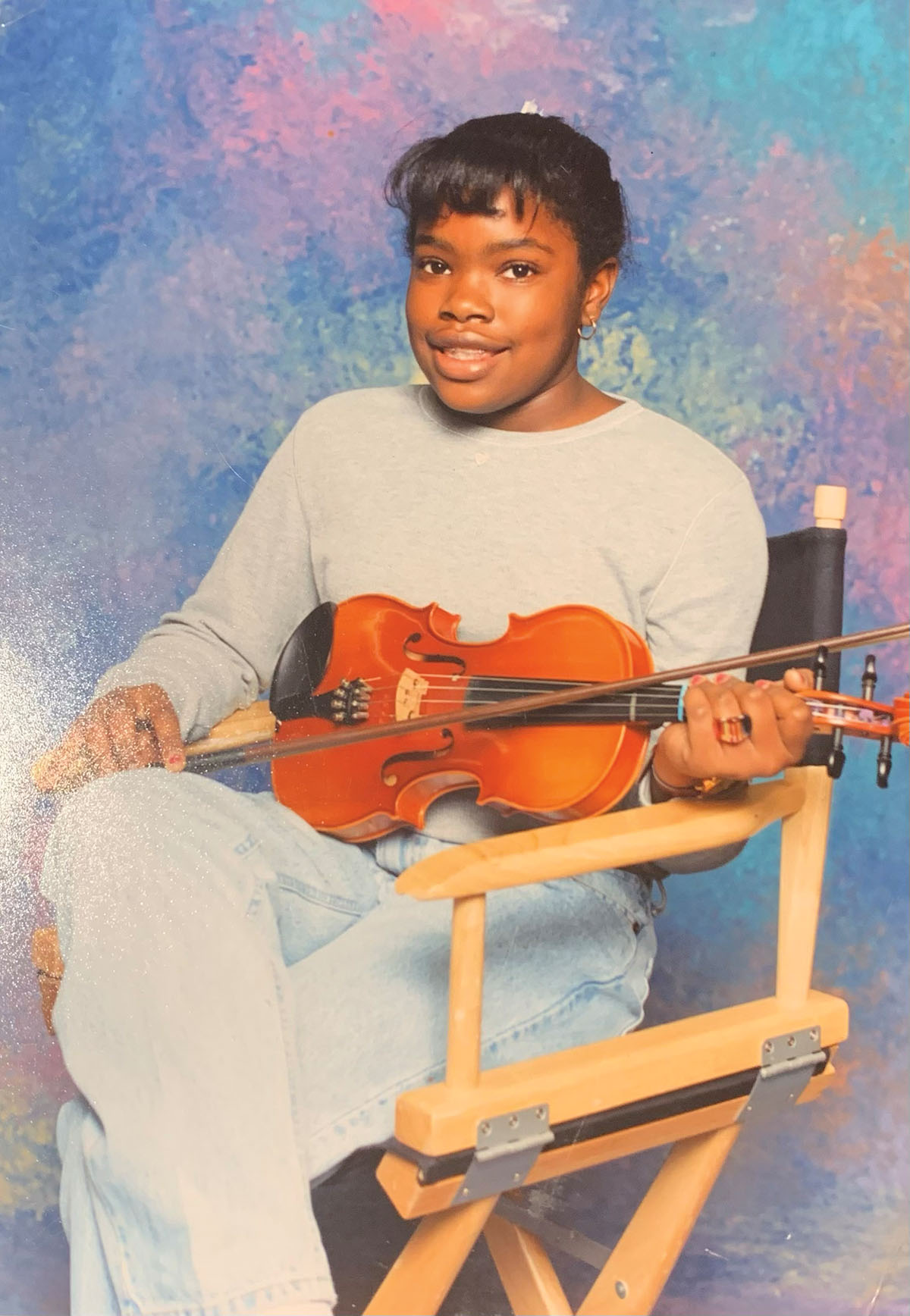
The author in her youth in Houston
A term that first appeared in the UK in 2005, glamping actually has origins that date to 600 BC Siberia, 16th-century France and Scotland, and 19th-century African nations such as Kenya and Tanzania. There’s long been a demand for lush, comfortable lodgings that eschew the elements, and it shows. Today’s glamping industry is now valued at almost $700 million in North America.
Personally, I hadn’t given much thought to the phenomenon or the Instagram influencer stereotypes the term evokes. I assume this attitude as I reluctantly open my laptop to see what my sister is getting us into. Although the Walden Retreats website refrains from using the term glamping, I see pictures of glowing Johnson City sunlight rising over plush, safari-style tents. Soft textiles and curated cookware. It paints a comfortable picture for people who—for whatever slithery reasons—want to experience Texas’ abundant outdoor beauty with some stylish bumper guards. Suddenly, I can see myself lounging on-site with eyes closed, sipping coffee as golden-cheeked warblers and canyon wrens chirp in the distance.
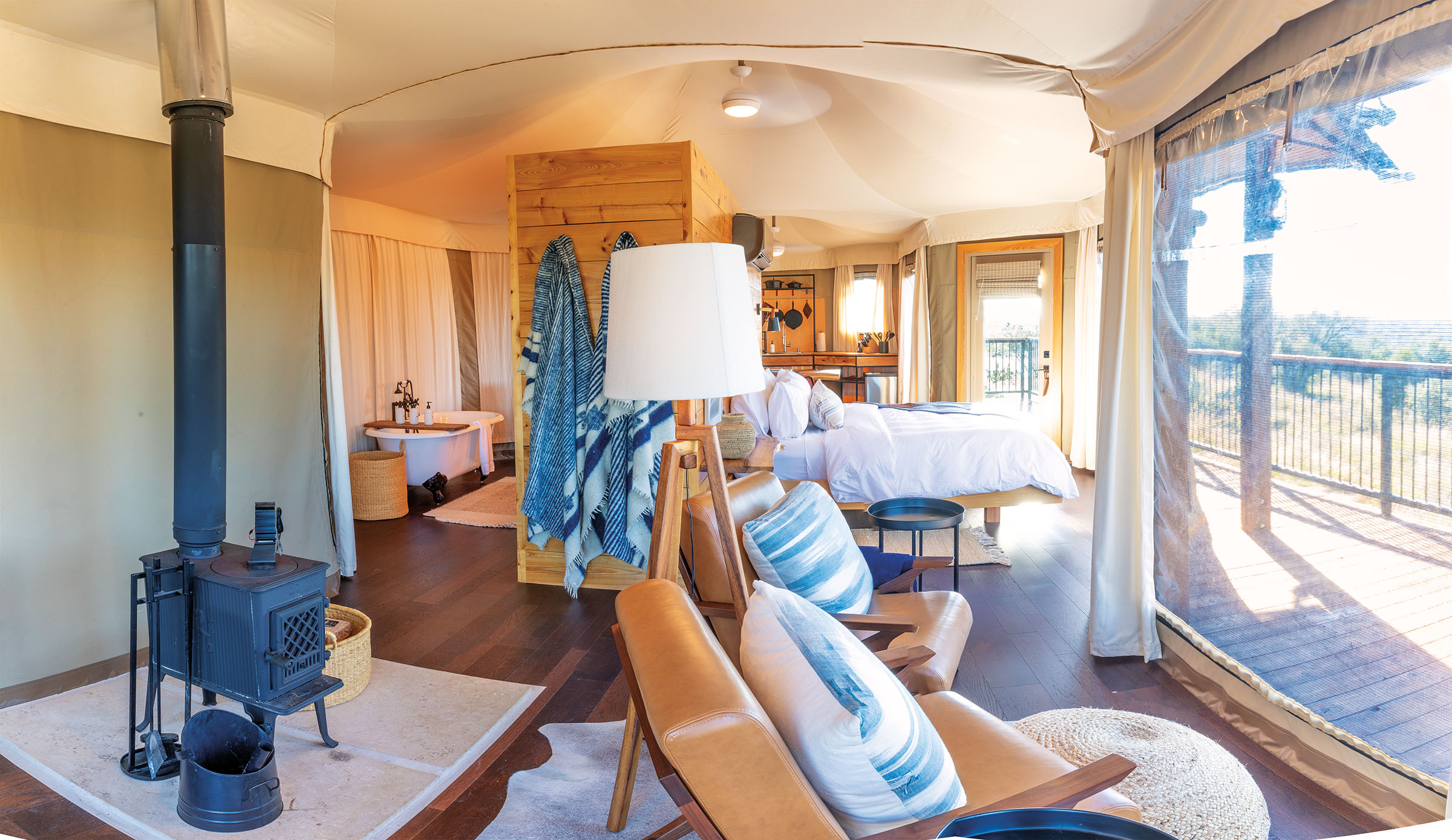
Walden Retreats provides unparalleled views, even from inside its opulent tents.
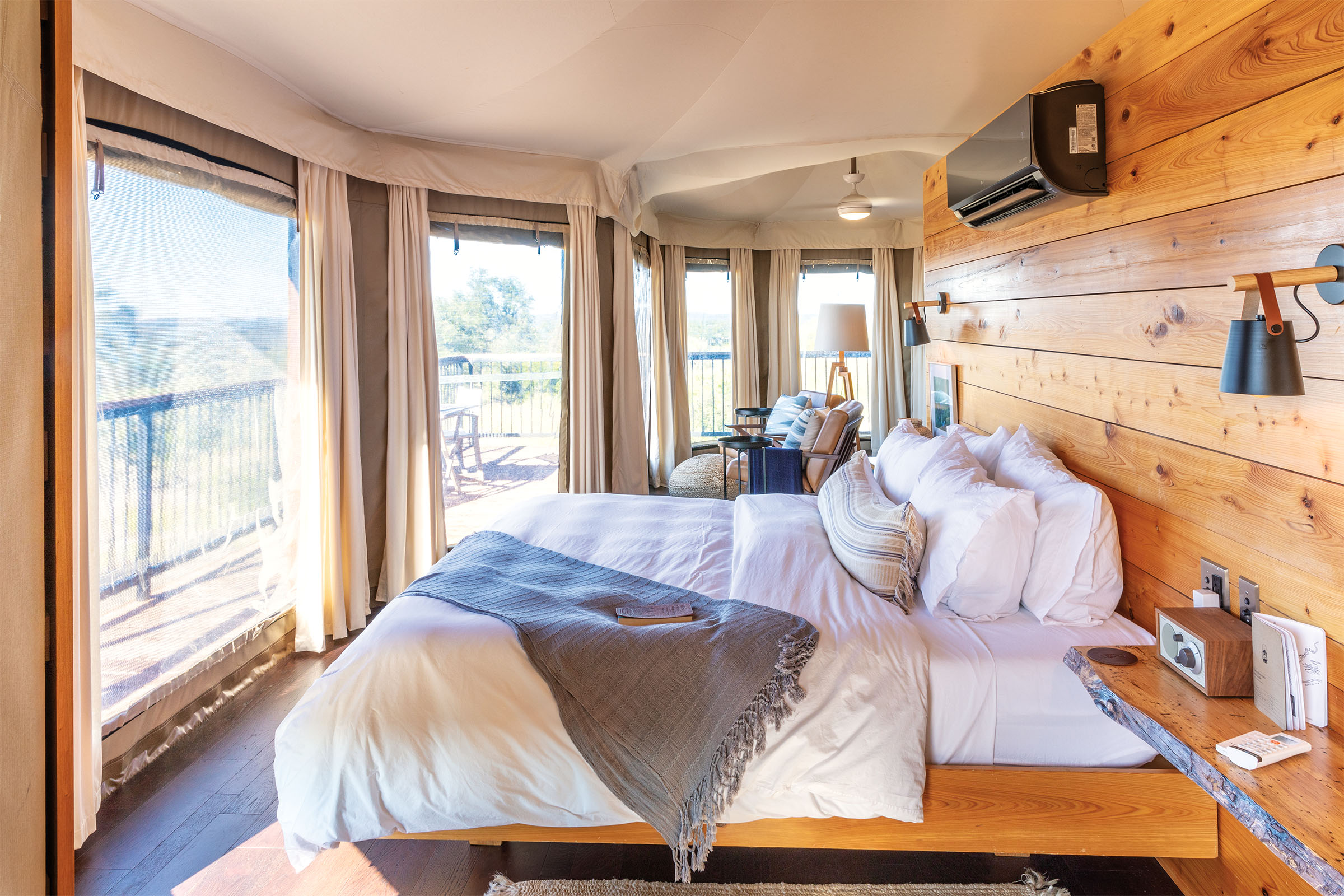
The luxury lodgings at Walden are outfitted with comforts such as king-size Casper beds, air conditioning, and clawfoot tubs
When I arrive on a warm December afternoon, I realize my projections are accurate. The following morning, I read books beside cups of French press coffee and watch the sun dance across the open Hill Country sky. I gaze at bees hopping along prickly pear cactus, and I rejoice in birdsong during the day. Initially, the intensity of dusk is almost blinding, and then—as if my eyes recognize they are intended for this type of darkness, unadulterated by neon signs and illuminated skyscrapers—tranquil. I feel deliciously off the grid.
Visitors at Walden Retreats can go hiking, biking, canoeing, swimming, and fishing, but I am completely content lounging in my abode with its wraparound deck. Founder Blake Smith and his wife, Sarah Contrucci Smith, a licensed designer, aim for an experience that is modern and comfortable without deviating too far from nature. While still situated in tents, which becomes audibly apparent when it rains, guests enjoy interior amenities such as king-size Casper mattresses, clawfoot bathtubs, and a Breville smart oven. Just as Henry David Thoreau escaped his modern city life for solitude, the Smiths hope Walden Retreats—named after the author’s transcendentalist tome—provides the space to unplug, slow down, and reflect.
“The tent is an old kind of structure, but the interior here is much more modern,” Blake says. “I think that can be a really unique experience. It kind of reminds you of what it was like to camp in the backyard as a kid. We wanted that to remain part of the experience and not remove the natural environment completely.”
It turns out I’m not the only person thinking about being outside more often. According to the National Park Service, there were 312 million visits to our country’s national parks in 2022, up 5% from 2021. Texas’ national parks and other National Park Service—protected areas received 5.7 million visits in 2022. But of that number, only 2% is made up of Black Americans like myself (less than 1% in 2018).
This disparity is top of mind for Bradley Kliemann, a park interpreter and volunteer coordinator at Palo Duro Canyon State Park in the Panhandle. One of the ways he and his fellow rangers are attempting to shift perspectives is by increasing their social media presence to show diverse Texans engaged in fun, safe outdoor activities at the park. “Texas’ demographics are starting to change,” he says. “We really want to make sure that our state parks are seen as a welcoming and inviting place to all kinds of different people.”
Walden Retreats
1388 Gipson Road, Johnson City.
830-321-0295; waldenretreats.com
Rooms start at $225/night.
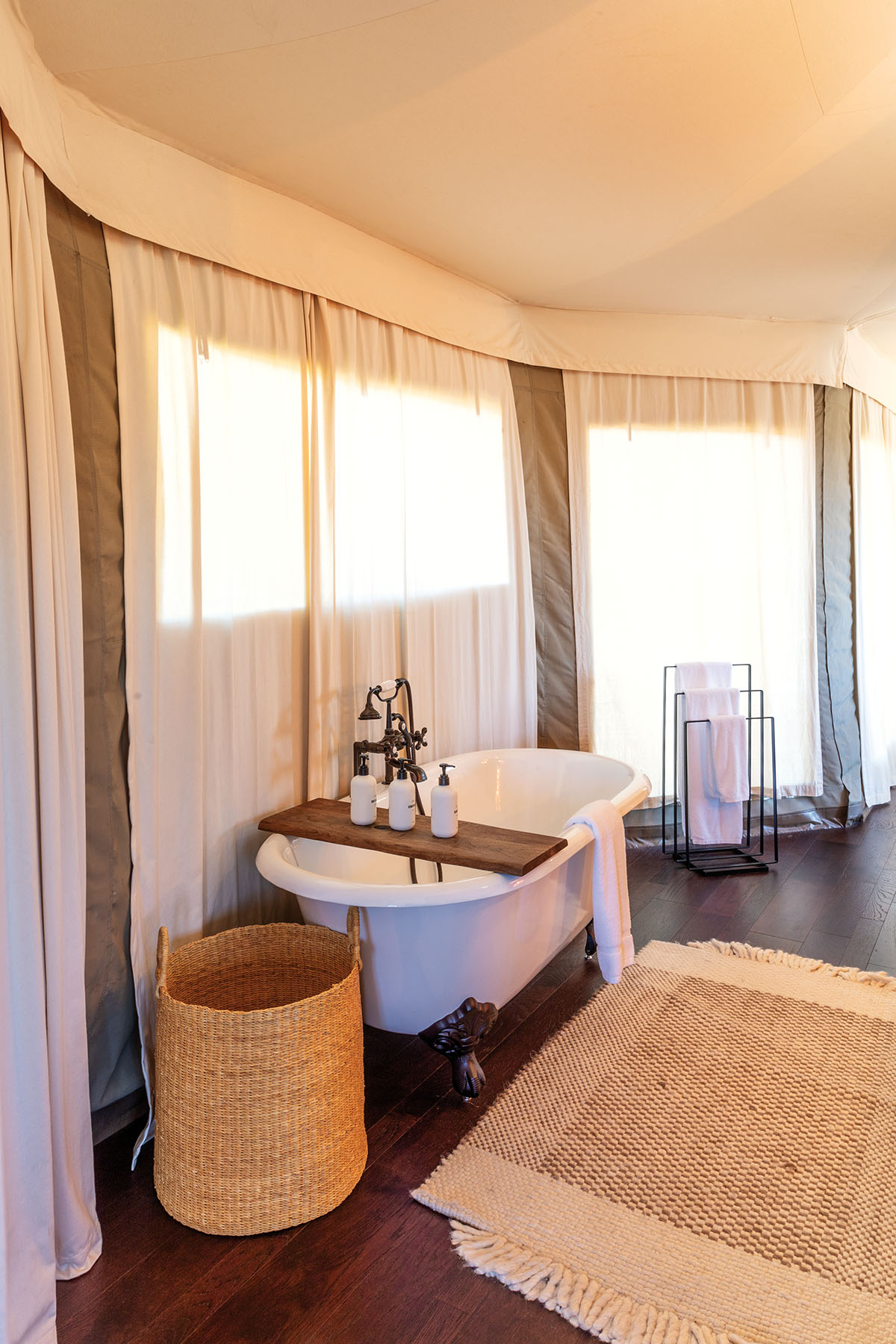
Private ensuite bathrooms offer a reprieve afer a day of exploring in the Hill Country
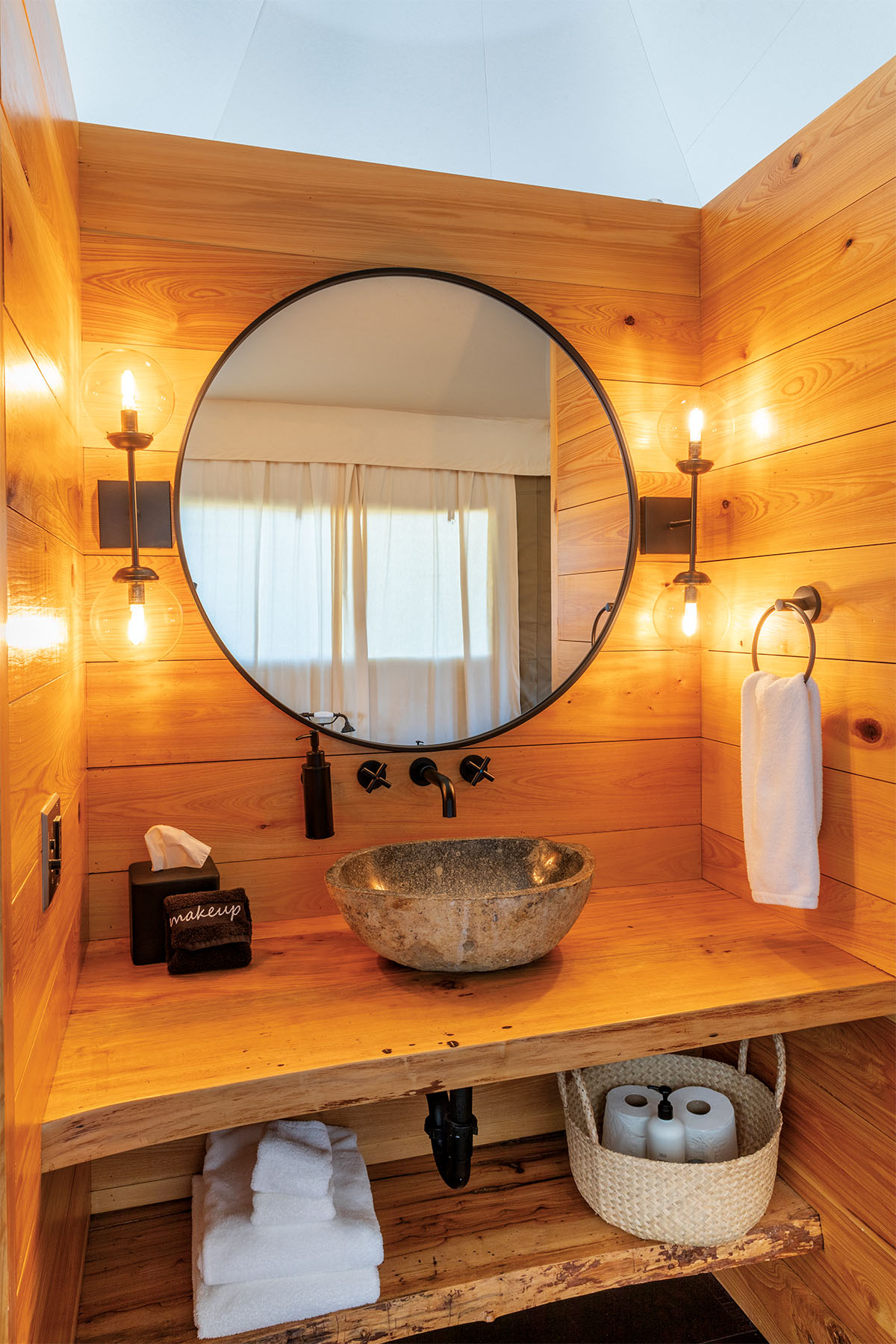
“Inviting” is also the buzzword of the moment for Brett Johnson of Dallas Park and Recreation, who is motivated to make nature more hospitable for area residents. Four months after my visit to Walden, I meet with the conservation manager, who is standing in the middle of White Rock Lake. While waiting for an eagle sighting as part of the city’s population control efforts, he explains how history, personal background, and even religious leanings affect how we think about nature. I’d reached out under the guise of my half-truth, but when he asks me to elucidate, I nervously fess up.
“It is extremely common,” he says. “When I really truly get to the heart of where most people get concerned about anything with natural areas, the more I boil it down, it will usually come back to snakes.”
These are the types of in-depth conversations Johnson has with marginalized communities throughout the Dallas area. Whether it’s listening to the concerns of Black residents about trees and the trauma they can evoke, instructing communities on dealing with invasive feral hogs, and yes, accompanying people on hikes to help them learn about the 32 different species of snakes (and the six that are actually dangerous), Johnson happily obliges. That’s because he sees the increasing need for liaisons between people and nature.
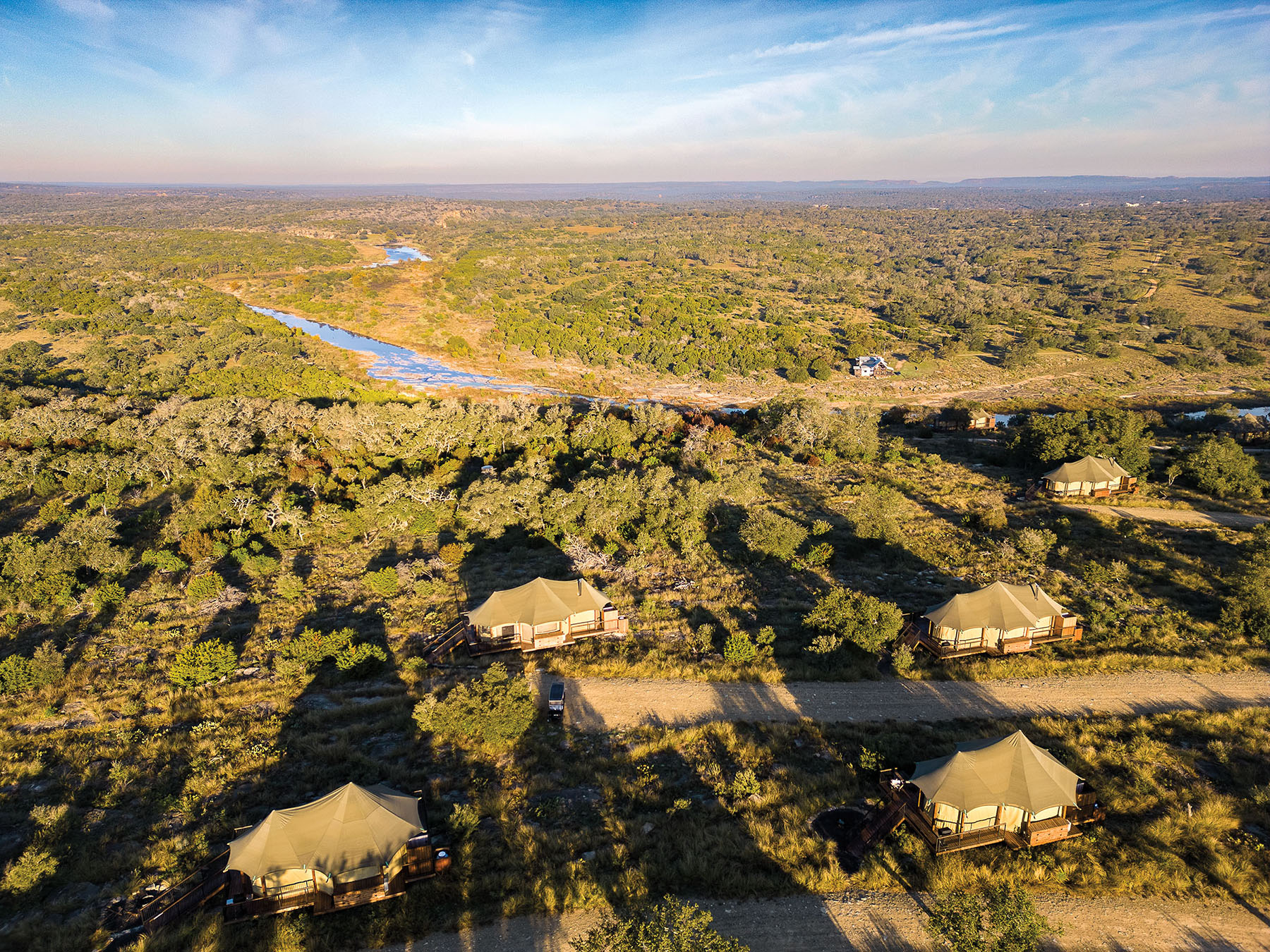
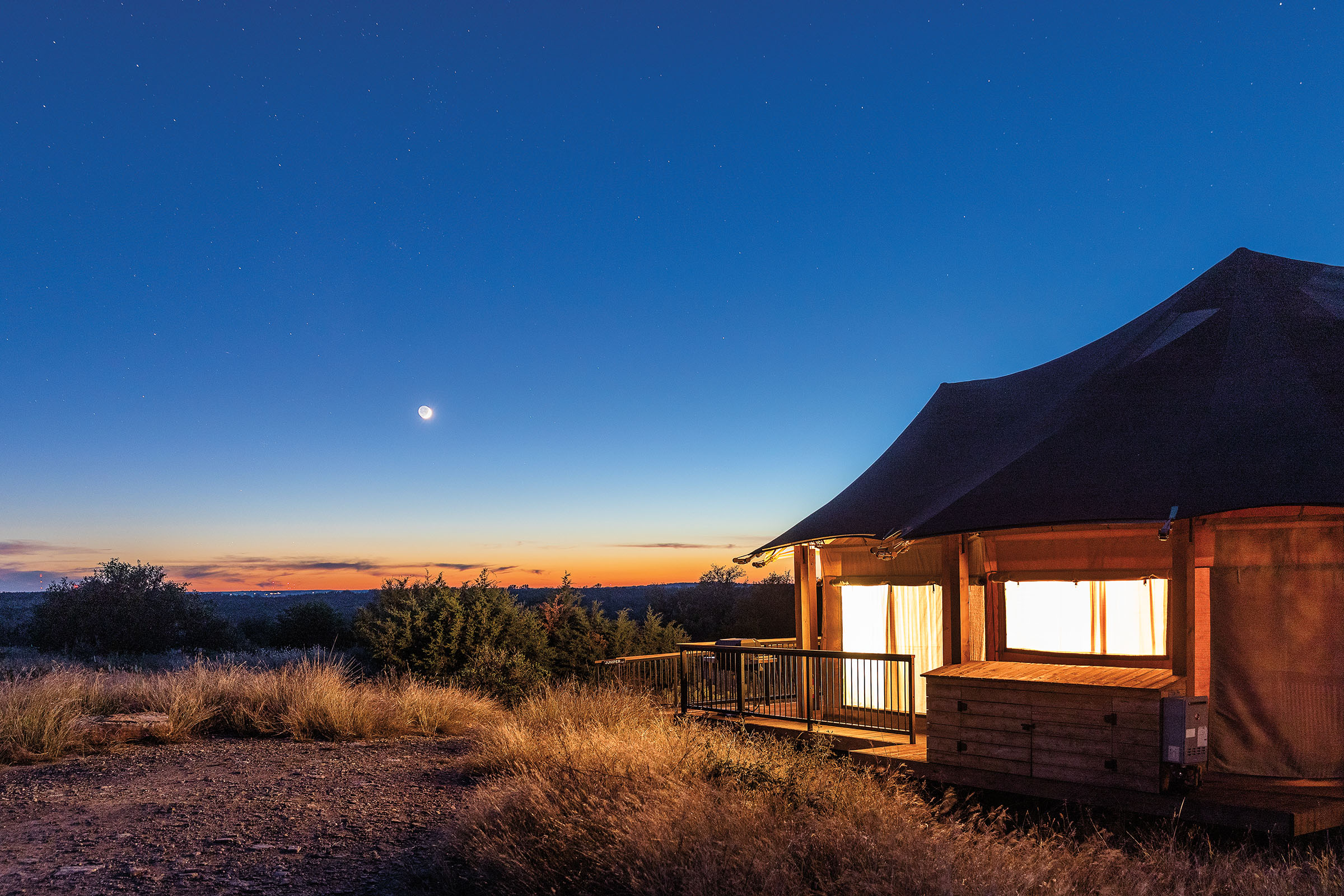
Without leaving their wraparound porch, guests can enjoy stargazing and sightings of wildlife such as deer, roadrunners, armadillos, and wild hogs.
I wish I’d had Johnson’s type of sage guidance when I’d packed for my glamping trip with my sister. Instead, I resort to replaying wobbly science facts I’ve heard concerning hibernation and mating seasons. Seeing as it is early December, I can only assume snakes are fast asleep (surely!). Panicked, I wake one night and revisit the Walden Retreats website to browse its extensive selection of FAQs: “While it is unlikely you will see them, there are snakes in the area,” states one such clause. “As unpopular as they may be, they do help control the pest and rodent population.” Although it induces a veritable gong hit to my psyche, an unexpected sense of calm follows in its reverberations.
“I don’t want to get too philosophical here,” Blake says. “Human beings are not separate from nature. We are all a part of it, as much as we modernize and remove ourselves from it. You’re a part of this whole dance that’s going on.” Blake goes on to explain that there aren’t just snakes on the grounds, but also hogs, longhorn cattle, roadrunners, armadillos, turkeys, and whatever species couldn’t fit on Noah’s Ark, apparently.
Before scaredy cats such as myself leap into the wilderness, licensed clinical social workers like Jasmin Washington of El Paso suggest examining the assumption that Texans are supposed to be fearless when it comes to Mother Nature. “I think that Texas has different stereotypes about it, but there are also plenty of people who didn’t have those experiences of being outdoors and living in the Wild, Wild West,” she says.
Washington is quick to point out that millions of Texans live in large metropolises where outdoor ruggedness is not the pervasive experience. Furthermore, the divide is slowly disappearing between rural and urban communities within the state. With iPhones and social media—not to mention the very real discomforts of climate change—we’re all staying inside more. But clinging to the notion that I have something to hide isn’t changing anything. “Shame is playing a role when you find yourself using those ‘should’ statements, or those faulty thinking distortions,” she says.
According to that logic, my connection to nature had been fraught since childhood. There’s no singular outdoor experience, so I should’ve just honed being myself instead of some imagined tough Texas ideal. “Outside is for everybody,” Kliemann says. “And you get to decide what the outside looks like for you.”
For me, it looks like sitting in one of Walden’s soft leather chairs, a cold Shiner within arm’s reach. It means eating fresh grapefruit salad and Gulf shrimp hot off the patio grill as Charley Crockett croons on the stereo. It’s realizing that my fear of snakes won’t disappear overnight, and that the acknowledgment of my phobia, paired with the luxurious calm of Walden Retreats, is a critical step in repairing my relationship with nature.
For apprehensive Texans who want to reconnect with the outdoors, Johnson suggests starting with some self-reflection. “Take a step back for a second and just ask: What specifically are you afraid of? And there is no right or wrong answer on that,” he says. “Then find someone out there who can help walk you through it. And I mean literally walk you through it.” That could mean connecting with the Texas Outdoors Woman Network, Outdoor Afro, the Master Naturalist Program, or Texas Parks and Wildlife’s Outdoor Family initiative. Only when I admitted the full truth about my fears could I begin the process of healing.
At the end of our stay at Walden Retreats, the attendant asks if we’d gone on any hikes or walked down to the river. Sheepishly, I reply no. While I’d worked up the courage to camp, I hadn’t yet found the courage to go exploring deep in the brush where I knew my slithery friends (or foes) reside. My cheeks flush and I brace myself for criticism. “Ah, that’s alright,” he says. “As long as you enjoyed your time out here.”
Overlooking the stunning rolling hills dotted by clusters of wildflowers, a new image of Texas comes to me—a silhouette of a Black woman in head-to-toe Old Navy separates, with a backpack of map pencils, a journal, and a Zora Neale Hurston book. She kicks her heels up for a relaxing weekend mostly on the porch. On her next trip, she’ll ask that friendly attendant to accompany her on a hike. Or maybe she won’t.
A real Texan knows her limits.
Forces of Nature
These instructive resources are a breath of fresh air for the camping- and outdoors-averse
Outdoor Afro
What started as a blog in founder Rue Mapp’s California kitchen is now the nation’s leading organization for reconnecting the Black community with nature. At each of its four Texas chapters, participants can take part in activities like swimming, gardening, and skiing. outdoorafro.org
Texas Outdoors-Woman Network
With far-ranging activities including birdwatching, fly-fishing, and horseback riding, this offshoot of the Texas Parks and Wildlife Department’s “Becoming an Outdoors-Woman” program provides outdoor-oriented opportunities in a
supportive, nonthreatening environment. tpwd.texas.gov/education/bow/town
Texas Master Naturalist Program
This volunteer-led initiative conducts youth education programs, provides natural resource conservation efforts, and helps operate parks and nature centers across the state. txmn.tamu.edu
Texas Outdoor Family
Texas Parks and Wildlife provides a crash course for camping newbies with workshops on setting up a tent, cooking outdoors, building a campfire, and more. They even provide the equipment for those who show up empty-handed. One-night programs cost $75 per family (up to six people). tpwd.texas.gov
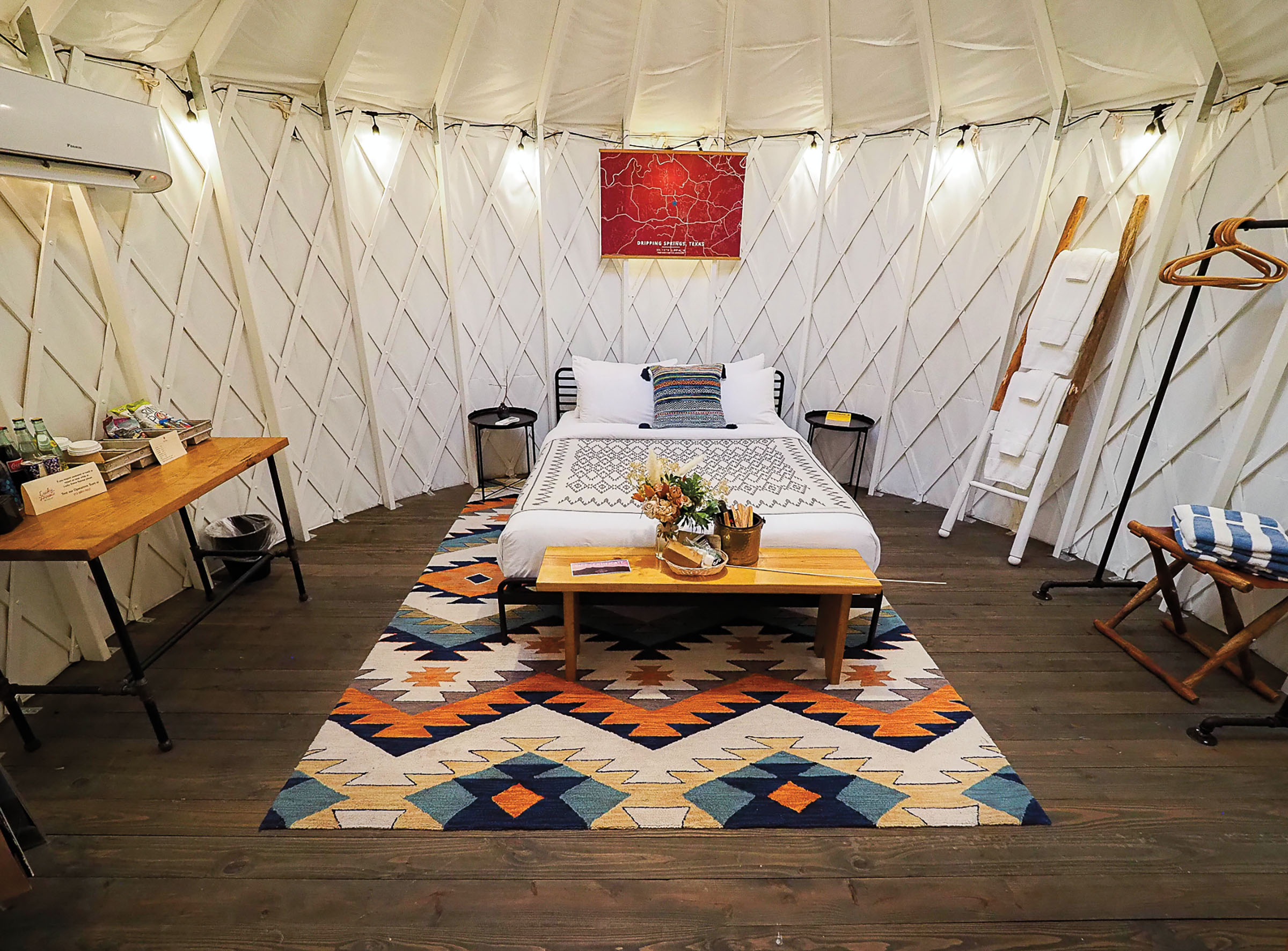
State of Glamping
Five other worthy spots offer luxurious outdoor getaways around Texas
Lake Bastrop North Shore Park, Bastrop.
Does it count as “roughing it” if you’ve got access to your own private hot tub and outdoor movie screen? Located 45 minutes east of Austin, this spot includes safari-style tents and retro Airstream RVs, all within a few steps of the lake. Prices start at $150/night. lcra.org/parks
Lucky Arrow Retreat, Dripping Springs. Get lost in the sounds of nature (plus a few Texas tunes) in one of the boutique lodgings outfitted with a record player and curated vinyl library. The tents and yurts on this 15-acre property are climate-controlled, and there’s even an on-site beer garden. Prices start at $123/night.
luckyarrowretreat.com
Palo Duro Glamping, Canyon. Even state parks have gotten in on the glamping game with amenities such as a complimentary breakfast, a s’mores kit, and wagons to transport your goods to this campsite deep in the heart of a magnificent canyon. Prices start at $299/ night. paloduroglamping.com
Cameron Ranch Glamping, Coldspring. Just a 10-minute drive from Sam Houston National Forest, this getaway offers a 426-square-foot NASA-themed geodesic dome that sleeps four, as well as a “Mirror House” with transparent walls (yet privacy from the outside). Outdoor baths, showers, and hot tubs, complete the experience. Prices start at $199/night. cameronranchglamping.com
StarStruck Glamping, Alpine. Falling asleep in view of a canopy of stars is a quintessential far West experience. You can do that in the remote desert of Terlingua Ranch near Big Bend National Park. Bonus: A spacious outdoor cooking area, soft bed, and private bathroom await after a day of adventure. Prices start at $399/night.
starstruckglamping.com
— Cynthia J. Drake








